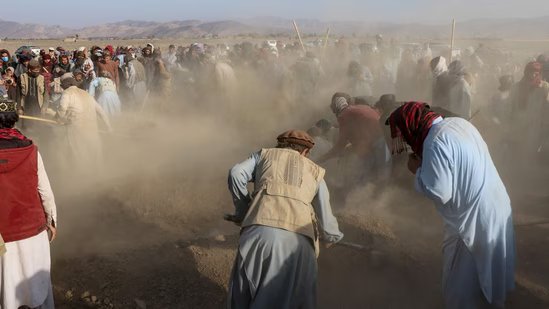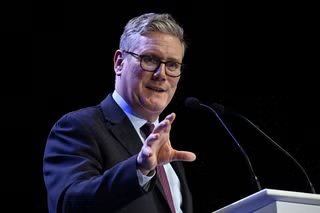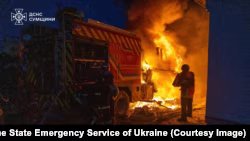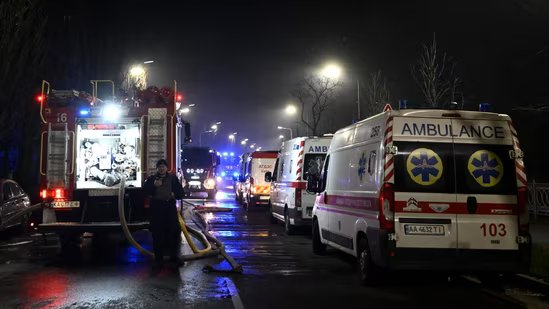Meetings in Switzerland. Talks in the United Arab Emirates. A possible Ukrainian presidential visit to the United States.
And yet, despite the recent flurry of diplomacy to end the war in Ukraine and officials touting promising developments, more often than not in off-the-record briefings, it’s hard to say if an agreement is actually close to the finish line. The core demands of each side remain the same.
The Trump administration is pushing hard to get a landmark agreement, but Russian President Vladimir Putin and his delegates have not given any indication that they want the years-long conflict to end in compromise.
Now, a US official has briefed reporters in a closed group that Ukraine agreed to a peace proposal – which may or may not be attractive to Russia – even as Ukrainian President Volodymyr Zelensky said “much work still lies ahead.”
It comes after Ukrainian and European officials strongly opposed and then revised the 28-point peace plan they were blindsided with last week, which was drafted by the US with apparent strong input from Russia.
What we do know from the first round of draft deals is that the Kremlin is still pushing its maximalist aims to demilitarize Ukraine, bar its entry into NATO and formally claim some of its territory. Ukraine still wants a viable pathway to NATO membership and wants to avoid ceding territory. The country and its European allies are publicly adamant that peace cannot mean capitulation to Russia.
Between those entrenched red lines, is there any space for negotiation?
Diplomacy appeared to be at something of a standstill until a new 28-point draft was widely leaked last week. What followed was intense criticism that it appeared to be a “wish list” of the Russian side, prompting the White House to go on record saying it was the result of a month of work between Secretary of State Marco Rubio and US President Donald Trump’s envoy Steve Witkoff along with input from both Russians and Ukrainians.
After intense negotiations this week with Ukraine and European allies, the draft was reportedly overhauled and pared back to just 19 points, with some of the provisions deemed unacceptable by Kyiv removed.
Some of the most contentious proposals – including issues related to territory and to NATO – were taken out altogether, for Trump and Zelensky to hash out later, Ukraine’s first deputy foreign minister Sergiy Kyslytsya told the Financial Times.
The exact wording of the latest draft is unknown.
Russia wants to gain full, formal control of the eastern Ukrainian regions of Donetsk and Luhansk. That would mean Ukraine giving up heavily fortified parts of Donetsk that it still controls and are seen as critical to its defense.
Ukraine has repeatedly ruled out giving up land that Russia doesn’t control. But Kyiv has previously accepted the idea that a temporary ceasefire could be along the current front lines – which could effectively entrench Russia’s occupation of the territory it does control.
The US proposals seen by CNN suggest the area of eastern Ukraine’s “fortress belt” could become a demilitarized zone, which is de facto controlled by Russia but its military forces would agree not to enter. It is hard to see how Zelensky could agree to that after years of strife, as CNN previously wrote, but in theory it could present one area of potential diplomatic movement.
The fine print will be important, especially when it comes to what Russian would control de facto – in reality – versus what it would control according to international law.
European allies have chimed in to reiterate that Ukraine’s borders cannot be changed by force.
Ukraine is also firmly holding on to its demands for credible security guarantees and its aspirations to join NATO.
But another one of Putin’s main red lines is anything that keeps the door open to Ukraine’s NATO membership. Moscow wants Kyiv to face a cap on its armed forces and enshrine in its constitution that it will not join the transatlantic military alliance or have NATO forces stationed within its borders.
The original version of the US-drafted peace plan called for the restriction of further NATO expansion, which was later struck out in the European counterproposal. It’s unclear what the latest proposal entails.

The wiggle room on those points might come in the form of what credible, non-NATO security guarantees for Ukraine could look like. The original US plan proposed “reliable security guarantees” for Ukraine and laid out specific scenarios that would result in a coordinated US security response.
It remains to be seen if Ukraine would be willing to agree to some form of guarantees modelled after NATO Article Five, even if it means the country cannot formally join the alliance any time soon.
Security guarantees are reportedly being spelled out in a separate annex agreement.
Admiral James Stavridis, formerly NATO’s Supreme Allied Commander, speculated to CNN: “You could kind of finesse the ‘no NATO troops’ by not having them be under NATO command.”
“You could have a scenario in which bilaterally the Ukrainians admit a contingent from Poland, a group from Estonia, Latvia, Lithuania, the Nordic countries … under their own national flag. They could then constitute a kind of tripwire,” he said, which may assuage Ukraine’s concerns, though might in turn trigger Russian objections.
The Trump administration renewed this latest diplomatic push after finding success in negotiating a ceasefire in Gaza. But virtually nothing has changed about the Kremlin’s position since the last big diplomatic push, which saw Trump host Putin in Alaska.
No deal was reached in Anchorage, and Trump would later scrap the idea for a second summit in Hungary. US officials told CNN at the time that they thought Putin’s stance on ending the war had not significantly shifted.
What has changed is that Russia is gaining incremental ground on the battlefield in Ukraine. The conflict has become a war of attrition, which favors Russia’s larger armed forces.
“They clearly think that they’re going to be in a position to dictate terms to Ukraine, rather than have to simply negotiate,” John Lough, head of foreign policy at the New Eurasian Strategies Centre think tank, told CNN. “I struggle to see other concessions that they would really be prepared to make.”
Lough said he feels “gloomy” about the prospects of peace emerging anytime soon, but added one note regarding the Kremlin’s current diplomatic calculus: “I think that there is a question for Putin … whether he wants to miss the opportunity to gain from Trump’s assistance – because at some point Trump’s going to become fed up with dealing with this and will no longer invest effort into it.”
For Ukraine, what’s changed is mounting pressure on Zelensky’s administration in the wake of a corruption scandal, which centers on alleged kickbacks from contractors including those working to protect Ukraine’s energy infrastructure. The scandal has taken down two of Zelensky’s ministers and embroiled one of his former business associates. All the same, while his poll numbers are not as high as the early months of the war, he remains broadly popular among Ukrainians.
The White House has sought to project optimism and said that “a few delicate” details will require further talks. But by late Tuesday in Europe, assessments were more sober.
A Ukrainian source with direct knowledge of the talks told CNN that “it would be very wrong to say we have now the version that is accepted by Ukraine.” Ukraine’s National Security Secretary Rustem Umerov struck an equally temperate note, saying only that delegations had “reached a common understanding.”
Any breakthrough that did happen could still be cut off at the knees by an unfavorable Russian response.
Russian Foreign Minister Sergey Lavrov said Tuesday that any amended plan must reflect the “spirit and letter” of the Alaska summit earlier this year – an early indication that Russia won’t be favorable to compromises in the language.
Kremlin spokesperson Dmitry Peskov kept his messaging simple, saying they have not received official information about the amended plan and he had “nothing to report” about the US talks with Russian delegates in Abu Dhabi.

Many analysts continue to express skepticism that an agreement will be reached given the lack of common interest.
“War usually ends when both sides are exhausted and have more to gain by ending fighting than continuing it. Both are tired. Especially the Ukrainians; but not tired enough to accept such terms, an act which could see Zelensky evicted by popular protest,” wrote Greg Mills, a senior associate fellow at the Royal United Services Institute (RUSI), regarding the 28-point draft.
Umerov added that Ukraine looked forward to organizing a visit of Zelensky to the US to “complete final steps and make a deal with President Trump.”
In short, there will be more meetings.


















